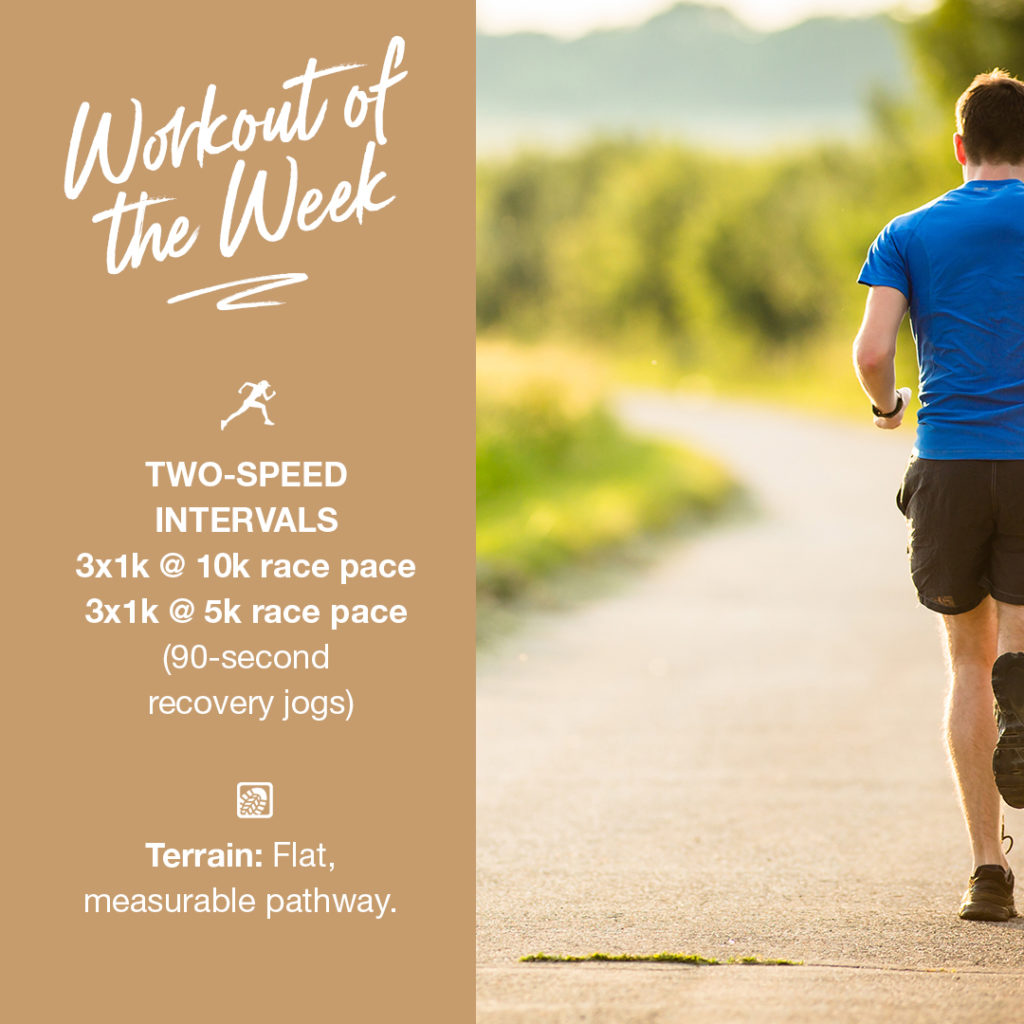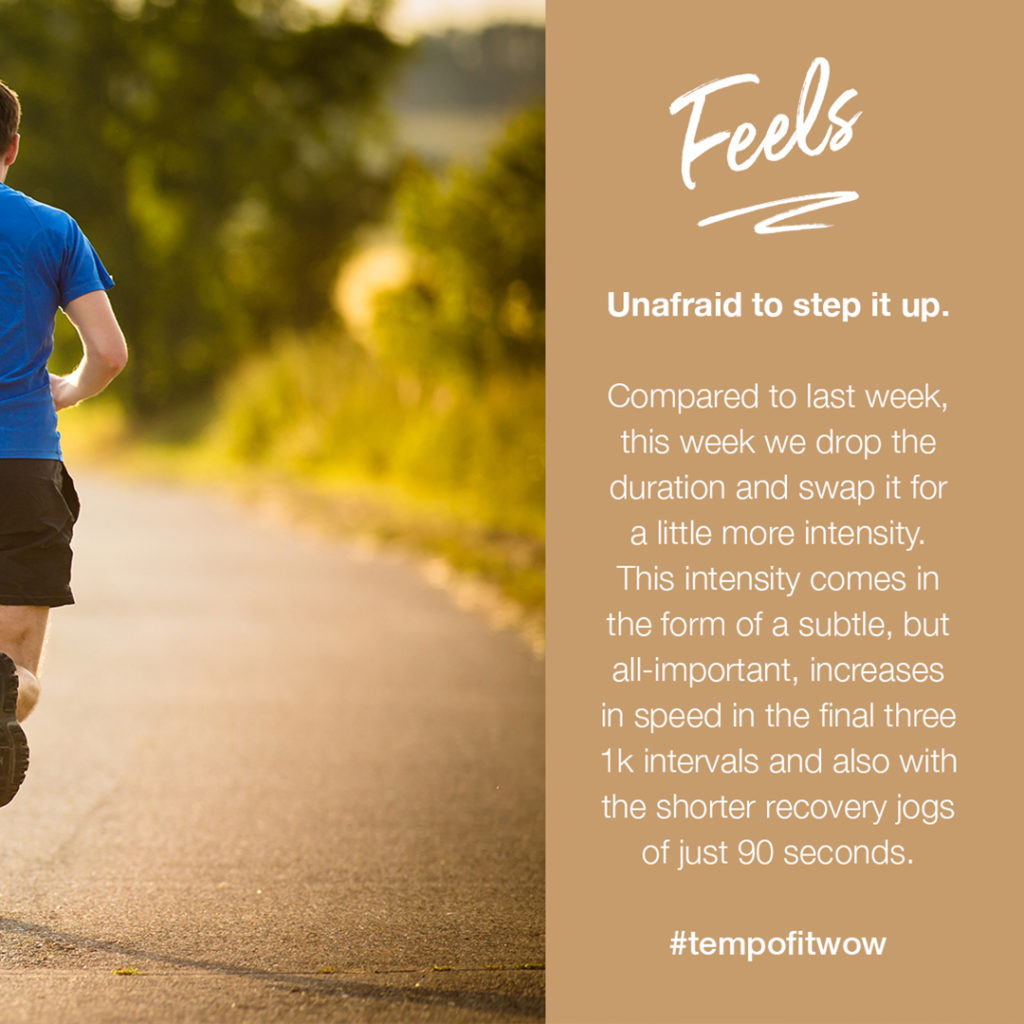
We carry on our month-long journey into the wonderful world of interval sessions. And this one is a fun workout that tests your ability to internally regulate subtle differences in pace.
WHAT
Two-Speed Intervals
3x 1k @ your 10k race pace
3x 1k @ your 5k race pace
(90secs recovery jogs)
Terrain: Flat, measurable pathway.
Feels: Unafraid to step it up.
Compared to last week, this week we drop the duration and swap it for a little more intensity. This intensity comes in the form of a subtle, but all-important, increases in speed in the final three 1k intervals and also with the shorter recovery jogs of just 90 seconds.
WHY
A sensible training plan should always have a logical progression from week-to-week and month-to-month. This workout is a natural extension of last week’s 6xmile at 10k race pace by adding some intensity. So you will feel your breathing and heart rate start to approach their max in those final few intervals—all great prep for next week!
HOW
All runners should have their favourite local workout spots that is either measured (e.g. a running track or measured pathway) or measurable (flat enough and without too many trees or buildings for your GPS to give accurate readings). If you don’t have a couple of these near you (one for still days and one for windy days) I’d encourage you to hunt around on Google Maps, Mapmyrun or Strava Heatmaps to find something that can become your regular!
This week’s workout calls for a subtle but all-important step-up in speed from 10k race pace to 5k race pace. Aim to nail that pacing in this session, more on that in my Thought-for-the-Week blog piece.
THOUGHT-FOR-THE-WEEK: THE FOUR PILLARS OF GREAT PACING
Developing an internal speedometer for your running pace is one of the fundamental skills all runners should learn—it’s the equivalent of a pianist learning their scales. So here are four data points that you can use as cues to build up your awareness of almost exactly how fast you’re going.
- Your Watch: This of course is the obvious one. Use it as an objective measure for understanding the feedback you’re getting from the other three pillars of pacing.
- Your Movements: Your cadence, heel recovery height, knee drive, arm swing all tell you something about how fast you’re moving. Take note of the movements your body makes to achieve certain speeds and memorise these for situations when you can’t just rely on a watch.
- Your Feeling: Heart rate, breathing intensity, ability to talk, and your central governor that tells yourself things are hurting and you need to slow down—all of these are great internal metrics for learning to pace yourself. As you become more experienced as a runner, you’ll understand what breathing intensity (for example) can be sustained for what period of time. So, your internal measures become VERY useful when it comes to accurately pacing trail and cross-country races where you won’t be getting helpful splits.
- The Terrain: The final data point is understanding how your body responds to different terrain or weather conditions and what this means for your pacing.
When you combine all four of these inputs you can over time become a pacing master and know with single digits of seconds per KM or Mile how fast you’re moving. And when it comes to race day, there’s no better skill to learn!

Podcast (workout-of-the-week): Play in new window | Download
Subscribe: Apple Podcasts | RSS | More



